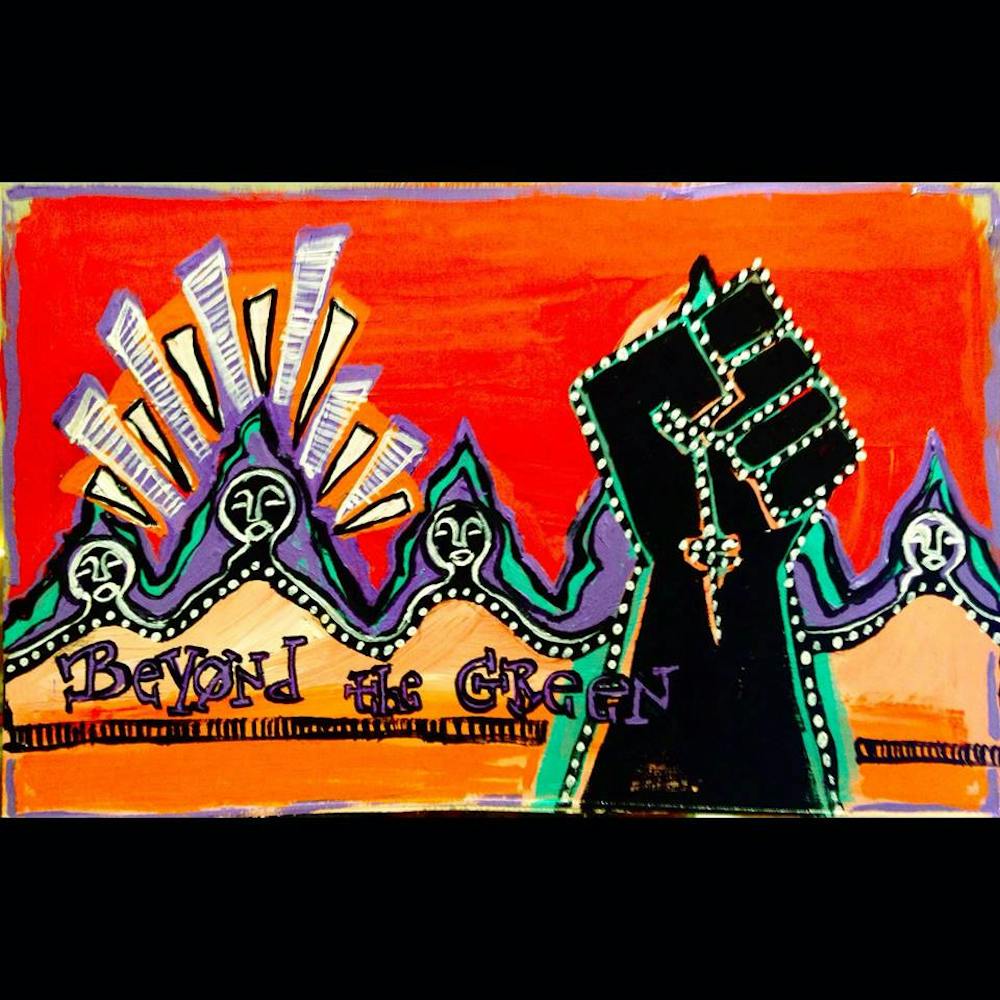Since its launch on April 9, 2014, beyond the green, a publication that seeks to provide an outlet for marginalized voices at the College, has rocketed to the forefront of campus consciousness. The publication, which “seeks to use writing as a way to support and ultimately achieve structural and institutional change” according to its mission statement, exercises its “alternative voice” on its blog beyond the green: collective of middlebury voices, where it accepts submissions of writing in any form as well as videos, photography and art from its regular contributors and the student body at large. beyond the green also runs a weekly column in the Campus’s opinion section.
“btg aims to provide space for voices that are not being heard on our campus, not just voices of the progressive, but also the voices of the tired, frustrated, angry, happy, joyful, critical and loving,” explained Lily Andrews ’14 and Veronica Coates ’14, two of the many cofounders of beyond the green. “It brings voices in the margins to the center because we’re already constantly bombarded by the normative Middlebury story.”
The effort to highlight new voices is one of the aspects of beyond the green most applauded by its new readers.
“Often times, Middbeat or the Campus editors offer students of color the opportunity to share their opinions about specific issues on campus,” Amari Simpson ’16 said. “Because of this limited range of opportunities, students of color are looked at as only valuable when the conversation is about race or identity on campus. btg not only allows students to discuss these issues, but students have the opportunity to contribute and share stories about any topic or idea that comes up in their lives.”
beyond the green reader Garrett Griffin ’16 elaborated that beyond the green allows students to write without the expectations of a more formal publication. The Campus’ ideal of welcoming all opinions “naturally engenders some discourse being elevated above others,” Griffin said. “This is beyond the green letting these writers have a space to express their opinions on their own terms and not on the terms of the Campus.”
Writing on her own terms was one of the primary reasons contributor to beyond the green Maya Doig-Acuna ’16 decided to submit to the publication.
“I wrote the first blog post [“late nights at middlebury”] out of a need ... to express myself at that point,” she said. “That was very much for me and it felt like beyond the green provides this pretty comfortable space for writing. Part of that was just the fact that it’s a blog so it feels less formal, and I feel less pressure to write in a certain way.”
This comfortable space is not available to all students, however.
“Knowing that no publication is neutral, we do not accept publications that are not in line with our mission statement,” Andrews and Coates said. In an effort to correct for the inequality that they see in publications that are open to all politics, submissions to beyond the green must match its “radical, anti-racist, anti-sexist, anti-homophobic, and anti-ableist” and rejecting “neo-liberal paradigm” agenda advertised on the header of the blog.
For some students, this exclusiveness motivates them to engage with the publication.
“It doesn’t try to be objective,” Doig-Acuna said. “Having that space is also attractive to me because I want to write articles that fit that mission. Also, in part, [I was] just trying to, through writing, have the backs of other peers and people who have similar experiences as I do.”
Others, like Max Kagan ’14, find beyond the green’s censorship to be fostering the same suppressive atmosphere it rejects in other publications.
Kagan’s Spring Symposium presentation, “Cruelties Well Used?”, was described as “offensive” and “advocat[ing] and defend[ing] mass violence and repression” by Andrew’s “spring symposium highlights” on the beyond the green blog. Kagan was upset by these comments because they were based solely on the title of his presentation, whereas the abstract of his presentation made it clear that his presentation “was pretty much the opposite of that.” Kagan “wanted to have some sort of rebuttal” but discovered that beyond the green does not allow any reader comments on its site.
“Really I just wanted to say what my side was and they didn’t have a platform to do that,” Kagan said. “I think it’s pretty ironic that they want to represent these marginalized voices and provide a space for dialogue that doesn’t currently exist on campus and yet, they don’t allow any sort of feedback or commentary.”
Kagan did share his thoughts on beyond the green’s Facebook page but his wall post was never responded to by the group.
In addition to protecting the safety of its writers, beyond the green has a no comments policy because “We hope that people will take these conversations into the real world, since they reflect real world issues,” Andrews, Coates and cofounder Ally Yanson ’14 explained.
In this regard, beyond the green has undoubtedly succeeded. This writer’s research found that the name beyond the green generated a varied opinion from almost every person to whom the topic was broached. beyond the green is provoking questions about the roles and practices of more formal publications at the College. In assessing whether this discourse will eventually subvert the “feeling of alienation within the campus dialogue,” highlighted in its mission statement, only time will tell.
beyond the green Sparks Controversy

Comments


